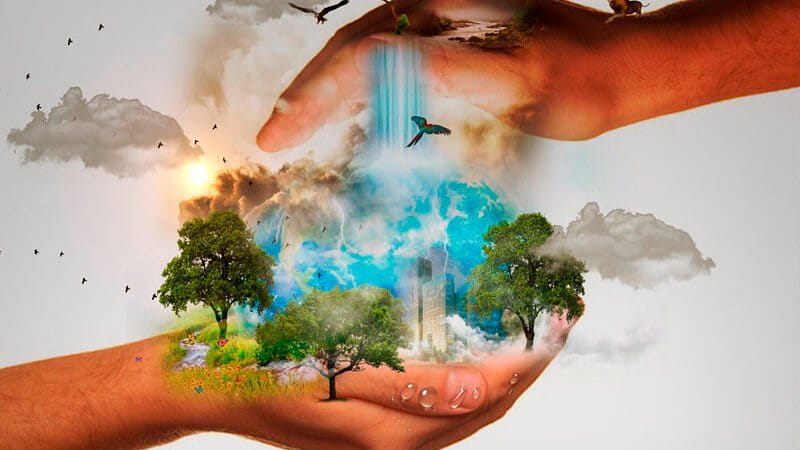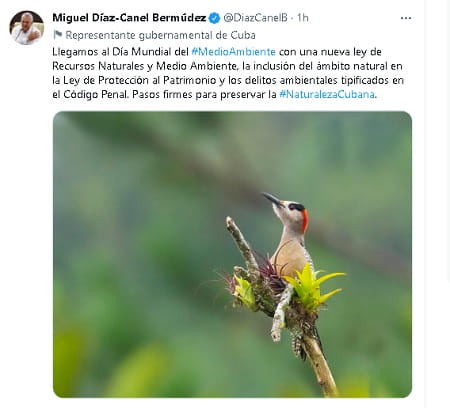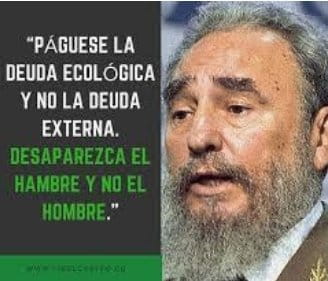
Cuba celebrates World Environment Day with events
That year in Stockholm, Sweden, between June 5 and 16, 1,200 delegates, representing 140 member states of the United Nations Organization, met to celebrate the World Conference on the Human Environment.
In the same year 1972, following the recommendations of the aforementioned conference, the XXVI session of the UN General Assembly established the United Nations Environment Program and chose June 5 as World Environment Day.
The first time this day was celebrated in the world was on June 5, 1973. In Cuba, activities began to be carried out on the occasion of that date in 1978. Since then and every year, World Environment Day has continued to be celebrated. In our country.
In Cuba, the care and conservation of the environment has been a priority task in the last six decades.

This was first attended to by the Academy of Sciences, which was reorganized in 1962, and later by the Ministry of Science, Technology and the Environment, known as CITMA by its acronym.
Cuba has been recognized internationally for its strategies to preserve the natural environment.
Cuban leaders and specialists have spoken at different events about the importance for the survival of humanity of the resolute struggle to protect and preserve nature, a victim of the increasing devastation that it has caused of dissimilar natural resources.
Likewise, Cuba has spoken out for the fight against climate change and the implementation of an environmental culture for sustainable development, and to encourage love and care for our flora and fauna.
In Cuba, in 1976, the Council of Ministers agreed to the creation of the National Commission for the Protection of the Environment and the Conservation of Natural Resources, which was officially constituted on March 2, 1977.
This Commission was in charge of dealing with problems related to the Environment and, together with other national organizations, carried out a vigorous fight against the dumping of industrial waste and in favor of the reforestation of different areas of Cuba, as well as the protection of beaches and the care of flora and fauna.
Cuba also provides specialized attention to areas declared as Biosphere Reserves, as well as those classified as National Parks.
Since April 10, 1959, the Cuban Government enacted the law that established reforestation and the creation of national parks.
This is how the National Parks identified as Cuchillas del Toa, Gran Piedra, the Sierra Maestra, the Guamuhaya massif, commonly known as Escambray, the Laguna del Tesoro, the Cordillera de los Órganos, the Guanahacabibes peninsula, the Ciénaga Lanier, the Sierra Cubitas and the Sierra Cristal. Over the years other National Parks have been created.
Cubano has only been concerned about caring for the environment on a scale but also at an international level.
 Precisely the maximum leader of the Revolution, Commander in Chief Fidel
Precisely the maximum leader of the Revolution, Commander in Chief Fidel
Castro talked about it at the closing of events held in the country and in other parts of the world.
In a very special way, it is worth remembering the significance and validity of what he stated on June 12, 1992 when speaking at the United Nations Conference on Environment and Development, held in Rio de Janeiro, Brazil.
Fidel specified: "An important biological species is at risk of disappearing due to the rapid and progressive liquidation of its natural living conditions: man."
He also explained that consumer societies are fundamentally responsible for the atrocious destruction of the environment and explained that they were born from the old colonial metropolises and imperial policies that, in turn, generated the backwardness and poverty that today plague the immense majority of humanity.
He commented that with only 20 percent of the world's population, they consume two thirds of the metals and three quarters of the energy produced in the world and added: "They have poisoned the seas and rivers, they have polluted the air, they have weakened and perforated the ozone layer, they have saturated the atmosphere with gases that alter climatic conditions with catastrophic effects that we are already beginning to suffer.”
Fidel denounced that forests are disappearing, deserts are expanding, billions of tons of fertile land end up in the sea every year, and that many species are becoming extinct.
And after stating that population pressure and poverty lead to desperate efforts to survive even at the expense of nature, he made clear that it is not possible to blame Third World countries, colonies yesterday, nations exploited and looted today by a world economic order. unfair.
He argued that the solution cannot be to prevent development from those who need it most.
He denounced underdevelopment and poverty in the world, wars, unequal exchange, protectionism and foreign debt, all of which attack ecology and promote the destruction of the environment.
What Fidel exposed 30 years ago at that United Nations Conference on the Environment has a very significant validity.
Precisely he stated: “If you want to save humanity from this self-destruction, you have to better distribute the wealth and technology available on the planet. Less luxury and less waste in a few countries so that there is less poverty and less hunger in much of the Earth. No more transfers to the Third World of lifestyles and consumption habits that ruin the environment. Make human life more rational. Apply a fair international economic order. Use all the science necessary for sustained development without pollution. Pay the ecological debt and not the foreign debt. Let hunger disappear and not man.”